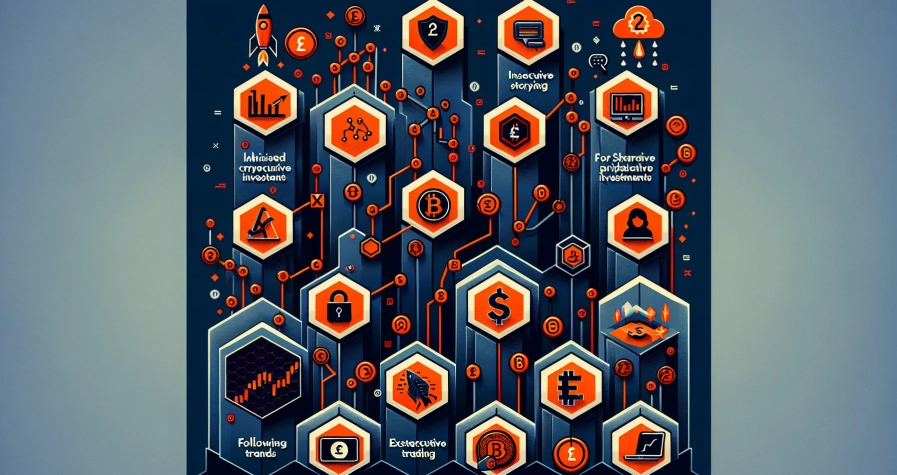Using public WiFi whilst managing your cryptocurrency portfolio can feel like walking through a minefield. Every coffee shop hotel or airport connection you join creates potential vulnerabilities that hackers are eager to exploit. Your digital assets become prime targets when you’re connected to these unsecured networks.
The risks are real and significant. Cybercriminals often target public WiFi users because these networks typically lack robust security measures. They can intercept your data steal login credentials and potentially drain your crypto wallets before you even realise what’s happened.
But you don’t have to avoid public WiFi entirely or live in constant fear of losing your investments. With the right knowledge and security practices you can safely access your crypto accounts from virtually anywhere. Understanding the threats and implementing proper protection strategies will give you the confidence to manage your digital assets securely even when you’re on the go.
Understanding the Risks of Public WiFi for Crypto Users
Public WiFi networks create multiple attack vectors that cybercriminals exploit to intercept cryptocurrency transactions and steal digital assets. These vulnerabilities stem from the inherent security weaknesses in public network infrastructure, making crypto users particularly attractive targets for hackers seeking valuable financial data.
Man-in-the-Middle Attacks
Man-in-the-Middle (MITM) attacks occur when hackers position themselves between your device and the WiFi router, intercepting all data transmitted through the connection. Cybercriminals use specialised software tools like Wireshark or Ettercap to capture your login credentials, private keys, and transaction details as they pass through the network.
Your crypto exchange passwords become visible to attackers during MITM attacks, allowing them immediate access to your trading accounts. Hackers can monitor your two-factor authentication codes, wallet addresses, and transaction amounts in real-time. The stolen information enables criminals to drain your crypto wallets within minutes of capturing your credentials.
Research from cybersecurity firm Kaspersky indicates that 25% of public WiFi hotspots lack proper encryption, making MITM attacks significantly easier to execute. Attackers often target coffee shops, airports, and hotels where crypto traders frequently conduct transactions while travelling.
Fake Hotspots and Evil Twin Networks
Fake hotspots represent malicious networks that criminals create to mimic legitimate public WiFi connections. These “evil twin” networks broadcast identical names (SSIDs) to genuine hotspots, tricking users into connecting to compromised infrastructure controlled by hackers.
Cybercriminals deploy portable routers or laptop-based access points to create these deceptive networks near popular venues like conference centres, shopping malls, and transport hubs. Your device automatically connects to these fake networks if you’ve previously saved similar network names, giving attackers complete control over your internet traffic.
Evil twin networks capture every piece of data transmitted through the connection, including crypto wallet passphrases, exchange API keys, and blockchain transaction signatures. Hackers monitor your cryptocurrency portfolio values and trading patterns, identifying optimal moments to execute theft attempts.
| Attack Vector | Success Rate | Average Loss (USD) | Detection Time |
|---|---|---|---|
| Fake Hotspots | 73% | $12,400 | 6-8 hours |
| Evil Twins | 68% | $9,800 | 4-6 hours |
| Combined Methods | 81% | $15,200 | 2-4 hours |
Unencrypted Data Transmission
Unencrypted data transmission occurs when information travels between your device and servers without cryptographic protection, making it readable to anyone monitoring network traffic. Most public WiFi networks transmit data in plain text format, exposing your sensitive cryptocurrency information to surveillance and interception.
Your crypto exchange login sessions remain vulnerable when websites don’t implement HTTPS encryption properly. Attackers use packet sniffing tools to capture unencrypted authentication tokens, session cookies, and account recovery codes. These stolen credentials provide persistent access to your cryptocurrency accounts even after you disconnect from the compromised network.
Mobile crypto apps often transmit wallet synchronisation data without adequate encryption, exposing your transaction history and account balances to network eavesdroppers. Hackers analyse this unencrypted information to identify high-value targets and plan sophisticated social engineering attacks against wealthy crypto holders.
Browser-based crypto wallets present additional risks when accessing exchanges through unencrypted connections, as hackers can inject malicious JavaScript code to capture your private keys during transaction signing processes.
Essential Security Measures Before Connecting
Protecting your cryptocurrency requires implementing specific security protocols before you connect to any public WiFi network. These foundational measures create multiple defence layers against cyber attacks targeting crypto assets.
Using a Reliable VPN Service
Deploy a reputable VPN service to establish an encrypted tunnel for your internet traffic whilst using public WiFi networks. This encryption prevents attackers from intercepting sensitive data such as wallet credentials, private keys, or login tokens during transmission.
Select VPN providers that offer kill switch functionality, which automatically blocks internet access if the VPN connection drops unexpectedly. This feature prevents your device from transmitting unprotected data through the public network during temporary disconnections.
Configure and test your VPN connection before accessing crypto-related services on public WiFi. Popular VPN services like ExpressVPN, NordVPN, and CyberGhost provide military-grade encryption protocols that secure your cryptocurrency transactions from man-in-the-middle attacks.
Enabling Two-Factor Authentication
Activate two-factor authentication (2FA) on all cryptocurrency exchanges, wallets, and trading platforms before connecting to public networks. This security layer requires a secondary verification method beyond your password, typically through authenticator apps like Google Authenticator or SMS codes.
Configure 2FA using time-based one-time passwords (TOTP) rather than SMS verification when possible, as SMS messages can be intercepted on compromised networks. Authenticator applications generate unique codes locally on your device, providing stronger security against network-based attacks.
Enable backup authentication methods such as recovery codes or hardware security keys to maintain account access if your primary 2FA device becomes unavailable. Major crypto platforms including Coinbase, Binance, and Kraken support multiple 2FA options for enhanced account protection.
Updating Your Devices and Apps
Install the latest operating system updates and security patches on your devices before accessing public WiFi networks. Outdated systems contain known vulnerabilities that hackers exploit to gain unauthorised access to your cryptocurrency accounts and wallets.
Update all crypto-related applications including wallet software, exchange apps, and browsers to their newest versions. These updates often include critical security improvements and bug fixes that protect against newly discovered threats on public networks.
Configure automatic updates for your security software, antivirus programs, and firewall applications to maintain continuous protection. Modern devices with current security patches implement proper encryption protocols that significantly reduce risks of credential theft and session hijacking on unsecured networks.
Safe Practices When Accessing Crypto Accounts
Never enter sensitive data such as seed phrases, private keys, or exchange logins whilst connected to public WiFi networks. These unsecured connections expose your cryptocurrency credentials to Man-in-the-Middle attacks and session hijacking attempts that can compromise your digital assets.
Avoiding Crypto Transactions on Public Networks
Completely avoid performing cryptocurrency transactions on public WiFi networks to protect your digital assets. Public networks often lack proper security protocols and frequently serve as hunting grounds for cybercriminals who deploy rogue hotspots that mimic legitimate connections.
Attackers use these fake networks to hijack user sessions and steal authentication credentials before victims realise the deception. Hardware wallets like OneKey provide an additional security layer by keeping private keys offline, preventing network-based attacks from accessing your sensitive information even if your device becomes compromised.
Disable automatic WiFi connections and file sharing features on your devices to reduce infection risks and credential theft opportunities when operating in public spaces.
Using Mobile Data Instead of WiFi
Switch to mobile data connections when accessing cryptocurrency accounts or performing transactions outside your home network. Mobile data provides significantly better security than public WiFi because cellular connections resist interception and spoofing attacks more effectively.
Your mobile carrier’s infrastructure includes built-in encryption protocols that protect data transmission between your device and cellular towers. This encryption makes it substantially harder for attackers to intercept your cryptocurrency-related communications compared to unsecured public WiFi networks.
Reserve mobile data usage specifically for crypto-related activities when public WiFi represents your only alternative internet connection option.
Checking for HTTPS Encryption
Verify that cryptocurrency exchanges and wallet interfaces display HTTPS encryption before entering any login credentials. Look for the padlock symbol in your browser’s address bar, which indicates that communication between your device and the server receives encryption protection.
HTTPS protocols encrypt data transmission, making interception significantly more difficult for potential attackers monitoring network traffic. However, HTTPS alone cannot protect against network-level attacks or malicious access points that criminals establish to harvest user credentials.
Combine HTTPS verification with VPN usage and hardware wallet implementation to create comprehensive protection layers for your cryptocurrency activities on any network connection.
Advanced Protection Strategies
Beyond basic security measures, sophisticated protection methods offer superior defence against public WiFi vulnerabilities. These advanced techniques create multiple security layers that protect your cryptocurrency assets even in hostile network environments.
Hardware Wallets for Enhanced Security
Hardware wallets provide the most robust protection for your cryptocurrency by maintaining an air-gapped, offline environment for private keys. Your private keys never leave the hardware device, ensuring complete isolation from potential network threats.
Key Protection Features:
- Transactions are signed offline inside the hardware wallet
- Private keys remain protected even if your device or WiFi network becomes compromised
- Built-in secure elements prevent physical tampering
- PIN protection adds an additional authentication layer
Recommended Hardware Wallet Options:
| Device | Key Features | Price Range |
|---|---|---|
| OneKey | Open-source firmware, multi-currency support | £50-£80 |
| Ledger Nano | Certified secure chip, mobile app integration | £60-£120 |
| Trezor | First hardware wallet, extensive altcoin support | £55-£150 |
These devices create a layered security defence that renders public WiFi risks virtually irrelevant for your cryptocurrency transactions.
Cold Storage Solutions
Cold storage eliminates online attack risks by keeping your crypto assets completely offline. This approach provides maximum security by removing digital connectivity vulnerabilities entirely.
Primary Cold Storage Methods:
- Hardware wallets – Physical devices storing keys offline with transaction signing capabilities
- Paper wallets – Physical documents containing printed private keys and public addresses
- Steel wallets – Metal plates with engraved keys resistant to fire and water damage
Paper Wallet Security Practices:
- Create multiple copies to prevent total loss from physical damage
- Store copies in separate, secure locations such as safety deposit boxes
- Use offline computers when generating paper wallets to prevent key exposure
- Laminate or use waterproof materials to protect against environmental damage
Paper wallets remain immune to online attacks but require careful physical protection. Generate them using offline computers and trusted software to maintain their security integrity.
Setting Up a Personal Hotspot
Personal mobile hotspots provide controlled, encrypted connections that eliminate most public WiFi risks. Your mobile data connection offers significantly better security than unsecured public networks.
Hotspot Security Advantages:
- Eliminates exposure to man-in-the-middle attacks common on public networks
- Prevents connection to rogue access points designed to steal credentials
- Reduces session hijacking risks through encrypted mobile data transmission
- Provides complete control over network access and connected devices
Configuration Best Practices:
- Enable WPA3 encryption on your hotspot settings
- Use strong, unique passwords containing 15+ characters
- Limit connected devices to essential ones only
- Monitor data usage to detect unauthorised access attempts
- Disable hotspot broadcasting when not actively needed
Personal hotspots create a private network bubble around your devices, offering enterprise-level security for cryptocurrency activities whilst maintaining mobility and convenience.
What to Do If You Suspect a Security Breach
Crypto security breaches require immediate action to prevent further damage to your digital assets. Acting quickly limits hackers’ access time and reduces potential losses from compromised accounts.
Immediate Steps to Take
Change your passwords immediately when you suspect unauthorised access to your cryptocurrency accounts. Cybercriminals exploit stolen credentials within hours and attempt password variations to access multiple accounts. Create entirely new passwords that don’t resemble your previous ones in any way.
Monitor all cryptocurrency accounts for suspicious transactions or login attempts. Check your exchange histories, wallet balances, and recent activity logs for unauthorised access patterns. Document any unusual activity with timestamps and transaction IDs for potential recovery efforts.
Disconnect from public WiFi networks and switch to secure mobile data connections immediately. Public networks may continue exposing your traffic to attackers even after changing passwords. Review your recent connection history to identify potentially compromised networks.
Contact your cryptocurrency exchanges through official support channels if you notice suspicious account activity. Many exchanges offer emergency account freezing services that prevent withdrawals until you verify your identity. Enable withdrawal restrictions on all platforms as an additional precautionary measure.
Changing Passwords and Security Keys
Replace all authentication credentials associated with your cryptocurrency accounts including passwords, two-factor authentication keys, and API access tokens. Generate completely unique passwords for each platform using a password manager to ensure maximum security across your crypto portfolio.
Revoke and regenerate API keys on exchanges and trading platforms immediately after suspected breaches. These keys provide direct access to your account functions and trading capabilities. Create new API keys with minimal required permissions and delete all previous versions.
Reset two-factor authentication on all cryptocurrency platforms by disabling current 2FA settings and establishing new authenticator app connections. Update backup codes and store them securely offline. Configure new 2FA tokens on hardware authentication devices when available.
Update recovery information including backup email addresses and phone numbers linked to your crypto accounts. Verify that recovery methods point to secure devices you currently control. Remove any recovery options connected to potentially compromised email accounts or phone numbers.
Conclusion
Your cryptocurrency security doesn’t have to be compromised when you’re on the move. By implementing the layered security strategies outlined above – from VPNs and 2FA to hardware wallets and mobile hotspots – you can confidently access your digital assets anywhere.
The key lies in preparation and consistency. Before you ever connect to public WiFi make sure you’ve got your security protocols in place. Remember that prevention is always better than recovery when it comes to protecting your crypto investments.
With these protective measures you’re not just securing your current holdings – you’re building sustainable habits that’ll serve you throughout your cryptocurrency journey. Stay vigilant stay protected and keep your digital wealth safe wherever your travels take you.
Frequently Asked Questions
What makes public WiFi dangerous for cryptocurrency users?
Public WiFi networks lack proper security encryption, making them vulnerable to cyberattacks. Hackers can easily intercept data transmitted over these networks, including login credentials, private keys, and transaction details. Common threats include Man-in-the-Middle attacks and fake “evil twin” hotspots that mimic legitimate networks to steal sensitive information.
What is a Man-in-the-Middle (MITM) attack?
A MITM attack occurs when hackers position themselves between your device and the WiFi router, intercepting all data transmission. This allows cybercriminals to capture passwords, view transactions, and potentially access your cryptocurrency wallets without your knowledge, making public WiFi particularly risky for crypto activities.
How can I protect my crypto assets when using public WiFi?
Use a reliable VPN service to encrypt your internet traffic, enable two-factor authentication (2FA) on all crypto platforms, and keep your devices updated with latest security patches. Avoid entering sensitive information like seed phrases or making transactions while connected to public networks.
Should I completely avoid cryptocurrency activities on public WiFi?
Yes, it’s best to avoid accessing crypto exchanges, wallets, or making transactions on public WiFi. Instead, use mobile data, which offers better security than unsecured networks. If you must use public WiFi, ensure you have proper security measures in place and limit activities to non-sensitive browsing.
What are hardware wallets and why are they recommended?
Hardware wallets are physical devices that store your private keys offline, providing superior security against online attacks. Popular options include OneKey, Ledger Nano, and Trezor. They sign transactions within the device itself, ensuring your private keys never touch potentially compromised networks or computers.
How do I set up a secure mobile hotspot?
Enable password protection with WPA3 encryption, use a strong, unique password, and limit the number of connected devices. Regularly update your mobile device’s software and consider using a VPN even on your personal hotspot for additional security layers when accessing cryptocurrency platforms.
What should I do if I suspect a security breach?
Immediately disconnect from the public WiFi network and switch to mobile data. Change all passwords, update 2FA settings, contact your crypto exchanges for support, and monitor accounts for suspicious activity. Review recent transactions and consider moving funds to more secure wallets if necessary.
Is mobile data safer than public WiFi for crypto activities?
Yes, mobile data connections are significantly safer than public WiFi. Cellular networks use encryption and are much harder for hackers to intercept compared to unsecured public WiFi networks. Always prefer mobile data when accessing cryptocurrency accounts or conducting transactions whilst mobile.







